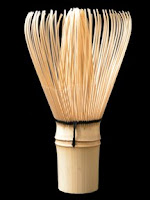 The aesthetic of wabi permeates and defines beauty for the Japanese culture. It is the ideal of Chanoyu yet wabi often is difficult to define and usually is reduced to simple and rustic. I would like to explore a little more about the origins of wabi, and its relationship with tea. As the Japanese aesthetic of beauty, wabi is a concept that is difficult to explain and deep in meaning.
The aesthetic of wabi permeates and defines beauty for the Japanese culture. It is the ideal of Chanoyu yet wabi often is difficult to define and usually is reduced to simple and rustic. I would like to explore a little more about the origins of wabi, and its relationship with tea. As the Japanese aesthetic of beauty, wabi is a concept that is difficult to explain and deep in meaning.
It has its origins in the verb wabiru. The original meaning of wabiru is to be disappointed by failing in some enterprise or living a miserable and poverty stricken life. According to the Zen-cha Roku, wabi means lacking things, having things run entirely contrary to our desires, being frustrated in our wishes. It goes on to say that to feel what is lacking is deprivation, or to believe that not being provided for is poverty is NOT wabi but rather the spirit of a pauper. Wabi means to transform material insufficiency so that one discovers in it a world of spiritual freedom. Although the beauty of wabi is not simply a beauty of mere poverty, unpretentiousness or simplicity, there are times when that is what it may seem to be.
Three aspects of wabi:
• Simple, unpretentious beauty
• Imperfect, irregular beauty
• Austere, stark beauty
The simple, unpretentious beauty is certainly one of the most obvious features of the wabi aesthetic, but it should not be confused with empty simplicity, or misshapen features with imperfect or irregular beauty. Wabi is a kind of beauty which stores a nobility, richness of spirit and purity within what may appear to be a rough exterior. There is a restraint that does not call attention to itself, yet attention to the smallest detail has been lavished on what cannot be seen.
An example of imperfect, irregular beauty we can see in the many famous tea utensils that have somehow been damaged and lovingly repaired. There is a well known bamboo flower vase made by Rikyu called Onjōji and it is prized because it is cracked, or the tea bowl named Seppo made by Koetsu that is admired because is has been repaired.
The austere, stark beauty of wabi comes from the tradition of renga poetry, a form of group composition of linked verse and from the Noh theater. The poets called it a cold and withered beauty and Zeami of the Noh called it an austere and serene beauty. This is the beauty of age and experience that can only be attained through a master’s accomplishment. It is a paring away of externals, until only the essence is left.
Two poems often cited by tea masters to explain wabi:
Looking about
neither flowers
nor scarlet leaves
a bayside reed hovel
an the autumn dusk
~Fujiwara no Teika
To those who wait
only for flowers
show them a sprig
of grass under the snow
in a mountain village
~Fujiwara no Ietaka
2024 Laos Chawang Single Extra Tall Ancient Tree #5
3 months ago
No comments:
Post a Comment